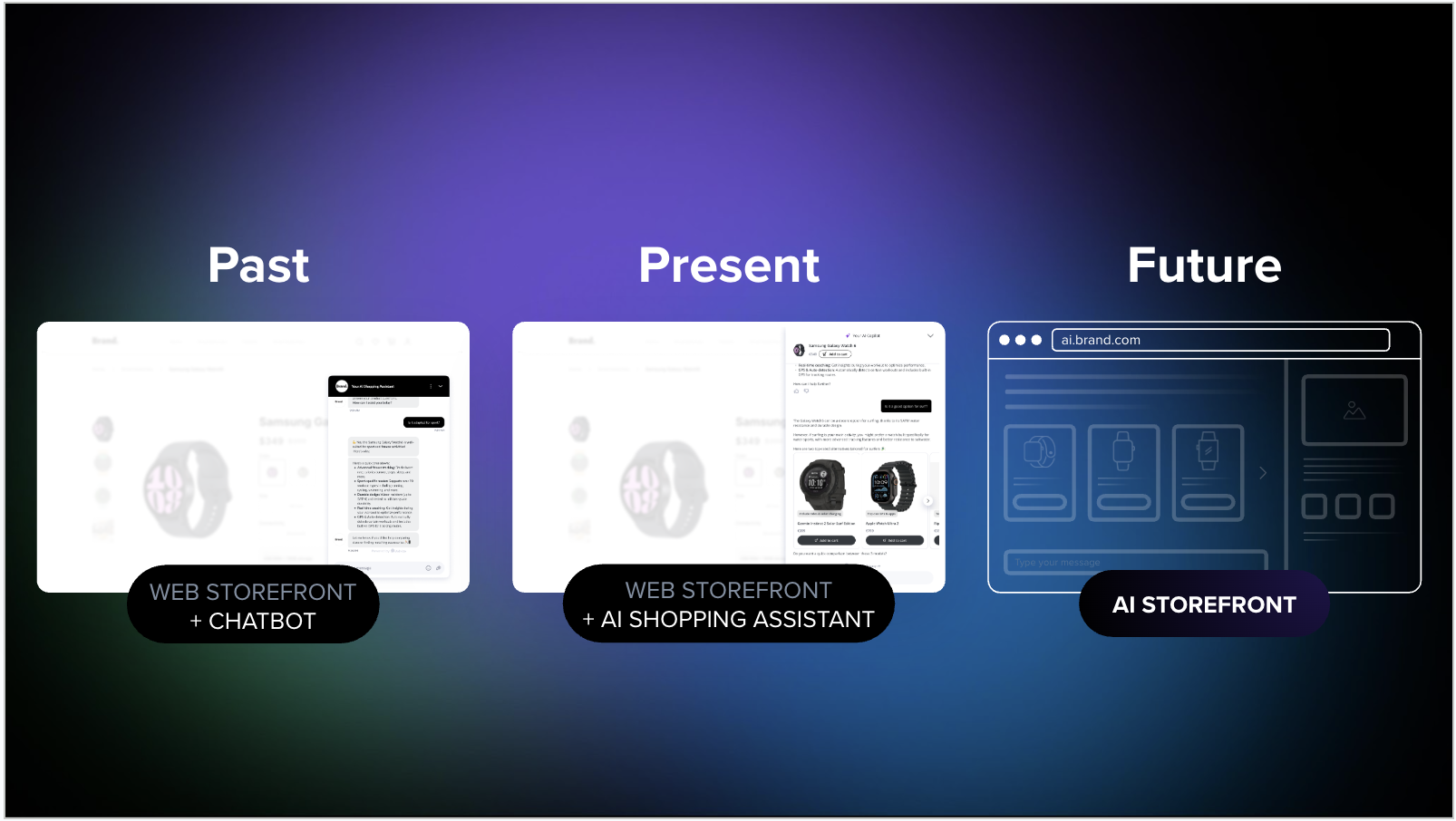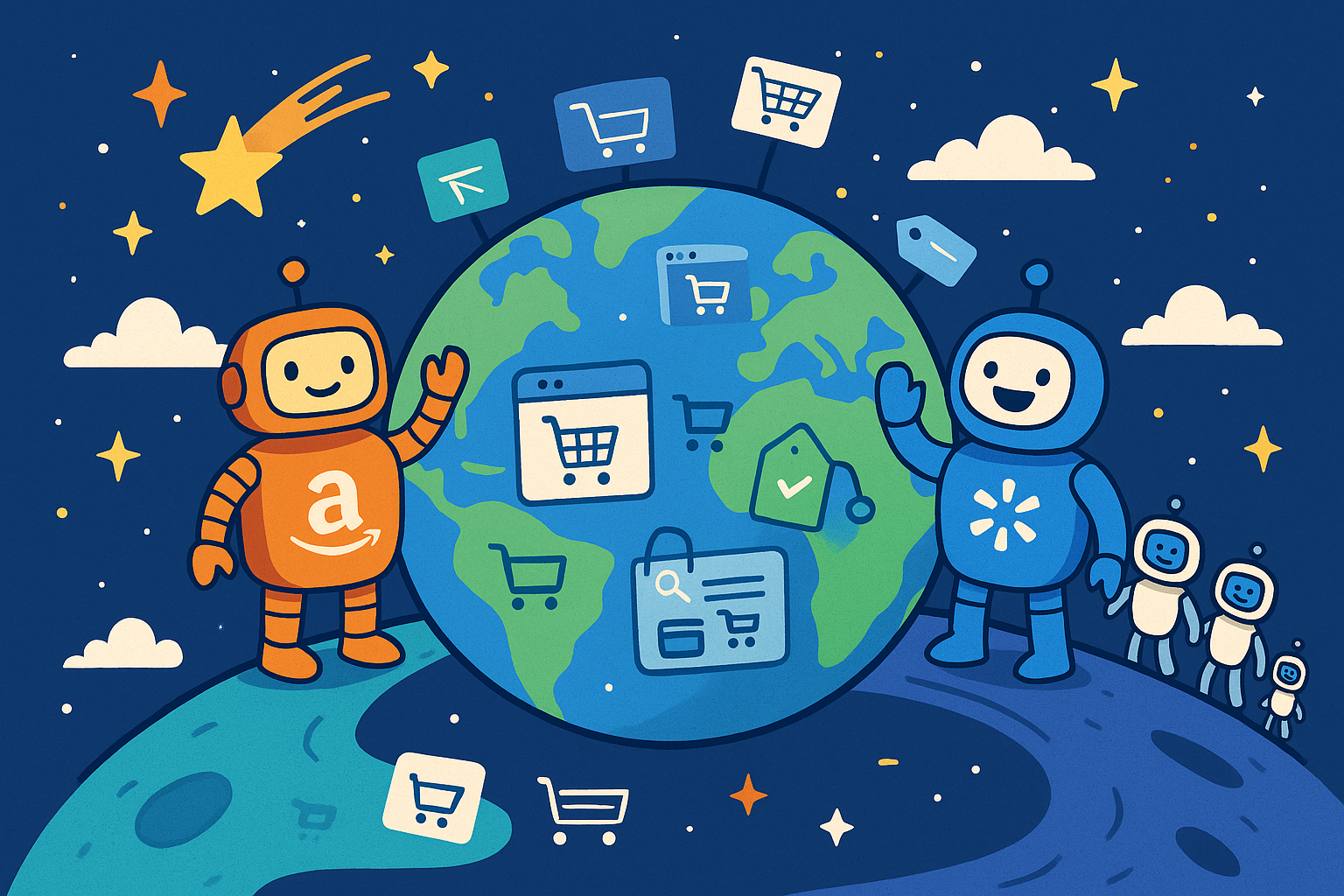The Customer Experience Gap: It's Time to Rethink Retail
iAdvize
Let's start with some not-new news: Retailers aren't keeping up with shoppers' high expectations and needs. Well over a decade ago, in 2005, Bain and Company released an oft-quoted stat: 80% of CEOs think their companies deliver a superior customer experience (CX). Just 8% of consumers agree. Although many brands know about this customer experience gap, few have taken action to remedy it.
And that approach was passable for a while. But Forrester believes that many CX programs will face mounting challenges in the months ahead. The analyst firm predicts that many CX programs are in uncertain territory.
However, the news isn't all bad for the CX profession. Interestingly, Forrester also projects that the number of CX executives will also grow by 25% in a year. There is hope for the discipline of CX, but the time to act is now.

What's going on? Simply put, companies that have taken a strategic approach to CX--and those that can prove measurable results--will grow their programs. But those programs that can't substantiate how CX benefits the business will shrink.
If this happens, the gap between CX winners and losers is only going to worsen. And the gulf between executives' and customer's perceptions may continue to widen.
This unfortunate reality is a sign that brands can't ignore the CX gap. Instead of clinging to CX practices that haven't proven valuable, retailers need to look at the experiences they deliver in new ways. And you don't have years to get it right. You need to revitalize your CX approaches today.
To understand the way forward, you need a clear, honest assessment of the CX status quo. And you need to ask yourself some tough questions. Is your CX program truly evolving--or is it stuck? And what can you do to stay afloat in times of tumultuous change?
Digital retail is on the verge of massive growth. But impersonal shopping experiences aren't what customers need. Connecting to your customers--in a human and 1:1 way through a conversational platform--is the answer.
The State of CX Today
Thought leaders have been noticing that CX progress has been stalling out in recent years. Of note, a study conducted by CustomerThink found that less than a quarter of CX programs affirmed that they can demonstrate tangible business results or differentiation. There's good news from the study, however. Nearly 60% of CX programs are showing signs of improvement.
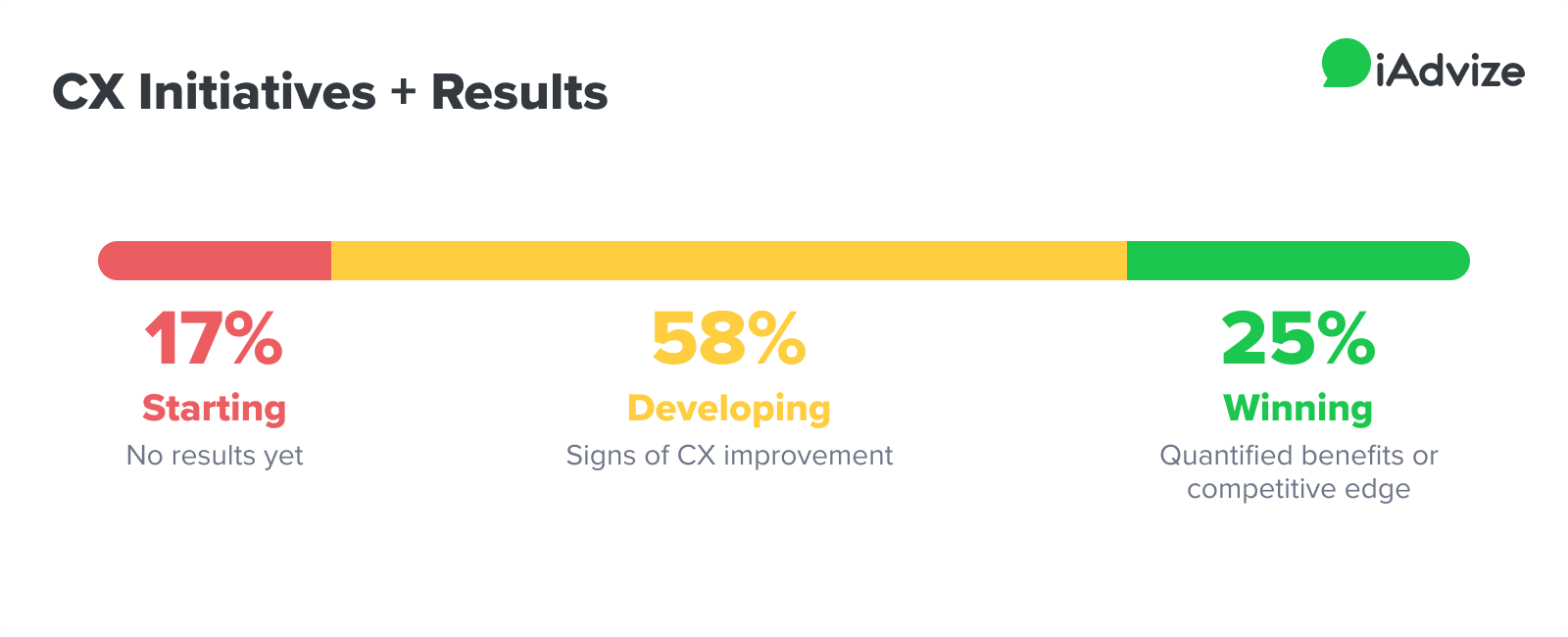
Another cross-industry study determined that just 20% of CX programs could clearly substantiate ROI. Nearly the same number (14%) had no way to communicate measurable results at all.
Why is this happening? They've invested in foundational systems to collect and process customer feedback. And companies often have negative feedback alerts that help them uncover and address problems with individual customer actions. Building out that tactical "find and fix" approach is an excellent first step--but many companies don't move forward.
The simple truth is that too many companies have treated CX as a technology initiative, rather than a people-centric one. Buying and implementing a CX feedback system has been viewed--by far too many brands--as equivalent having a CX program. Gathering customer feedback is essential for sure, but it's not the CX end game.
In recent years, more brands have understood that listening to customers' voices is crucial. And customers listening can yield more meaningful and actionable insight than tallies from closed-ended surveys alone.
As more brands have had that awakening, many have made efforts to collect voice of the customer (VoC) feedback--but few have known how to use it strategically. Companies have lacked processes to interpret and act on large volumes of open-ended feedback. So that valuable insight has sat untouched and unused.
Another problem with traditional CX feedback collection techniques: They occur after a transaction has completed. Think about it. When do you get a survey invitation? After check out at a store or on a website. By then, your customer journey has likely had multiple steps, often starting with research online.
How valid is your evaluation of your total experience at that point? What if you're happy with your final purchase decisions but encountered frustrations on the way to getting there?
The reality is that most brands have taken a very "after-the-fact" and close-ended approach that neglects the human, emotional element in the shopping journey. Many retailers have invested countless hours and dollars in hyper-analyzing a micro-moment in customers' overall relationship with their brands simply because that was the technology foundation for the discipline.
And that's why many brands--across many sectors--haven't moved the needle on building relationships with customers.
What Cross-Industry CX Numbers Tell Us About Current CX Performance
Data from Forrester's most recent annual CX Index--which measures how well brands' CX programs strengthen customer loyalty--suggest that CX is stalling. According to Forrester, the overall CX Index for US companies rose just 0.4 points.
Of course, there were bright spots in CX performance. Fourteen percent (14%) of brands saw rising CX scores, while just 5% declined. But there was an indisputable problem. An astounding 81% of brands' CX Index scores stagnated. And zero companies reached Forrester's defined elite level of CX excellence.
With no clear leaders in sight, Forrester identified that today's CX programs fall into four categories:
- Languishers - Brands with relatively high CX scores as compared to competitors that have not seen growth in at least two years.
- Lapsers - Brands that CX scores rose, but fell markedly for one or two years.
- Locksteppers - Brands that do little to differentiate themselves and rise and fall as competitors do.
- Laggards - Brands that have consistently remained near the bottom of these rankings.
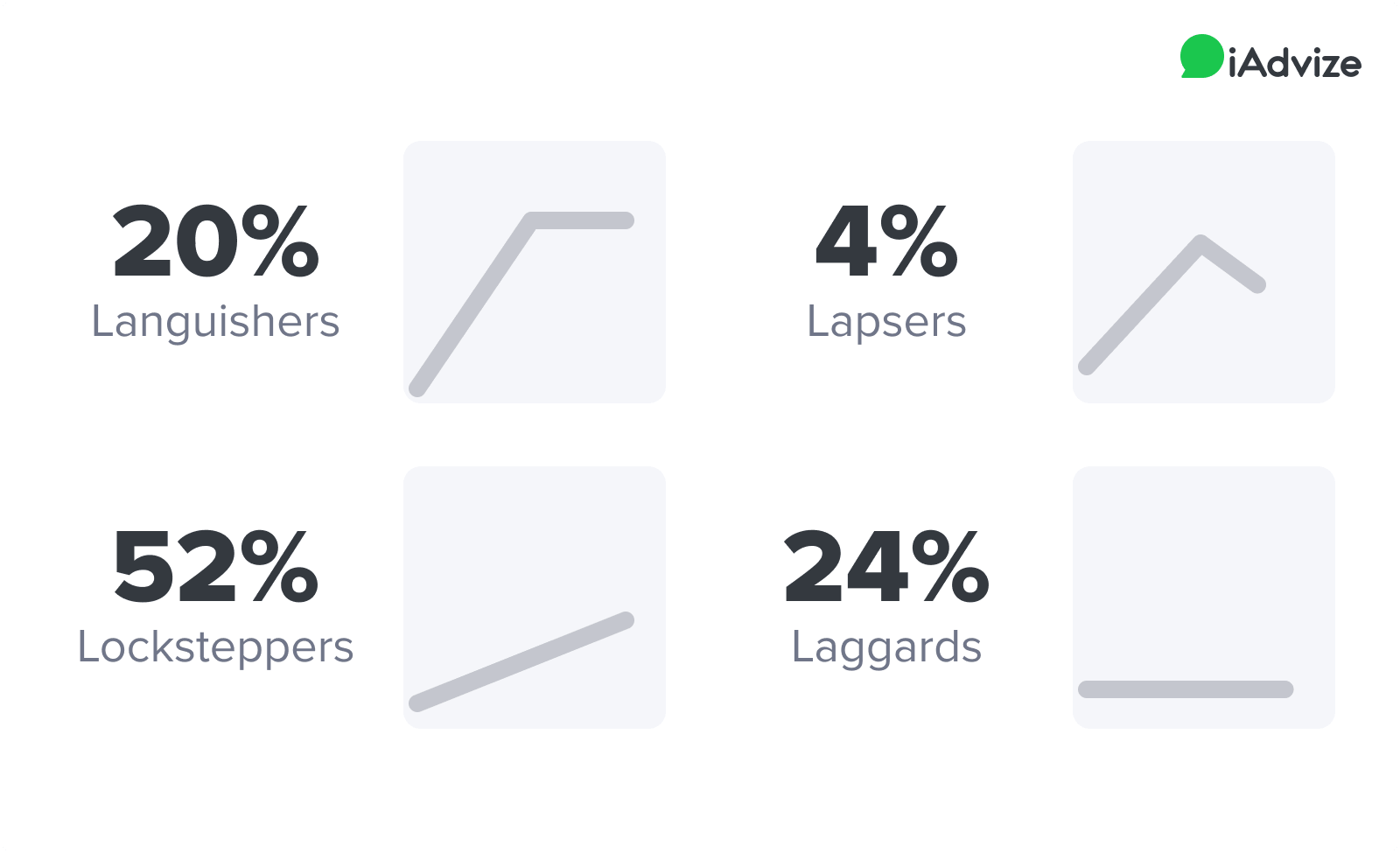
How can brands rise above the norm and achieve breakthrough CX performance? According to Forrester, recognizing the emotional component of the customer experience is vital. Consider this fact: The top-performing brands provided 22 emotionally positive experiences for every single negative one.
In short, you must recognize that every encounter with your brand is an emotional one. And you need to infuse a human-centric mindset in everything you do.
Today's Retailers Must Close the Emotional Customer Experience Gap
So, you understand the gap between customer and corporate CX expectations. But what can your company do about it?
It's important to understand that the CX gap is a manifestation of other disconnects within an organization. You can look to a concept called the Gaps Model of Service Quality to help reimagine your CX.
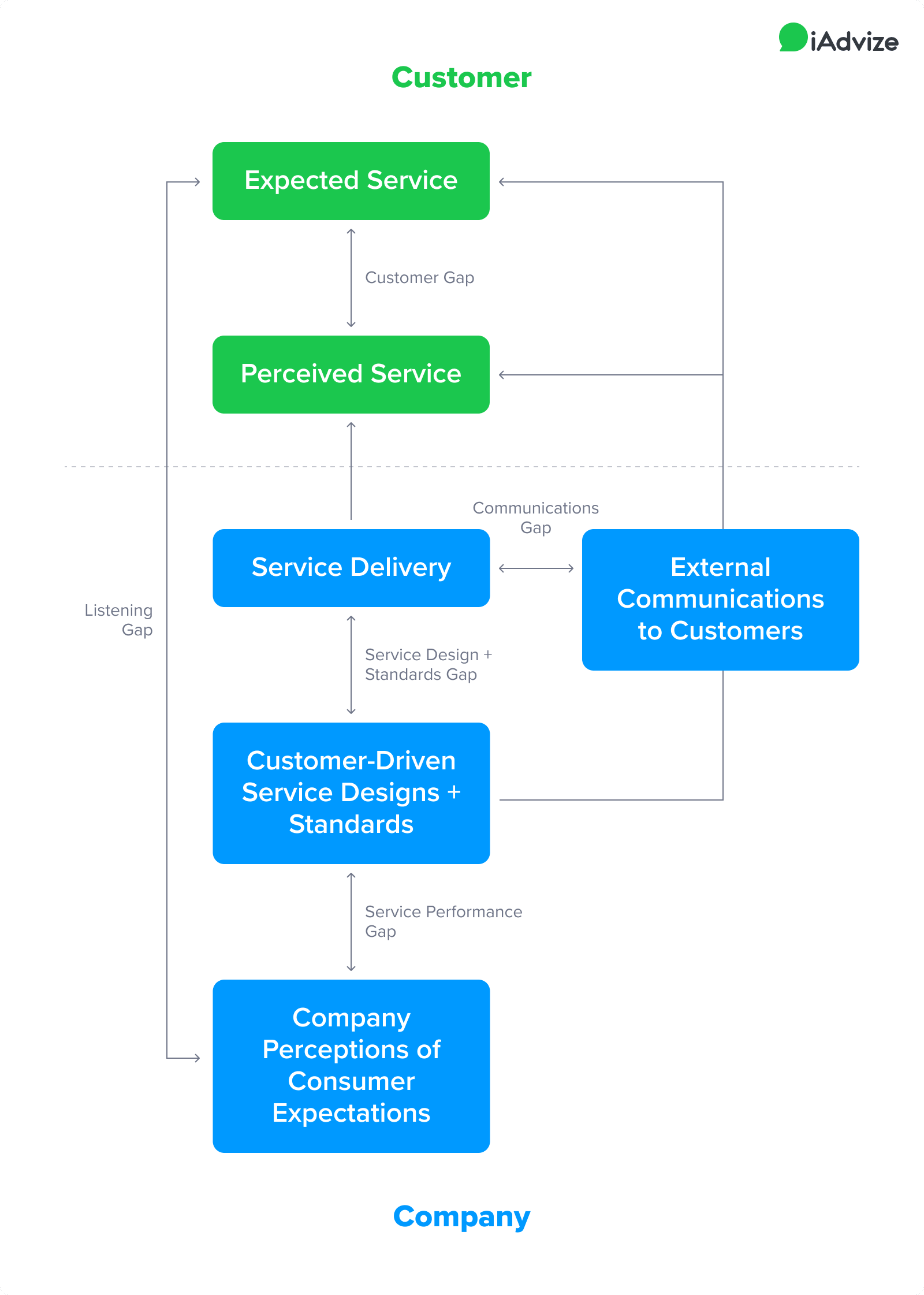
According to the Gaps Model of Service Quality, there are five gaps you should know:
- The Customer Gap: The gap between what customers expect and customer perceptions about their brand experiences.
- The Listening Gap: The gap between customer expectations and management perceptions.
- The Service Design and Standards Gap: The gap between service designs and standards and the company's perception of customer expectations.
- The Service Performance Gap: The gap between the service delivered to customers and the service levels delivered to customers.
- The Communications Gap: The gap between experiences delivered and a company's external communications and brand promises.
Together, these five gaps create an emotional gap between companies and their customers. An emotional gap widens when companies don't truly understand customers--and offer products or deliver services that don't meet customers' needs.
Importantly, listening to customers and using that insight to transform operations is essential to closing each gap.
The Customer Gap
A customer gap emerges when customers' perceptions of or interactions with a brand don't meet their expectations. Certainly, this gap occurs when a customer expects to receive a quality product for their money, but finds themselves disappointed. Focusing on product quality is critical to help close the customer gap--but it's only one piece of the puzzle.
Today's customers have huge expectations for service quality. They expect speed, information access, personalization, and quick problem resolutions. And they want to be treated like a human being--with empathy, care, and attention.
It's not enough to focus on matching product quality to perceived value. Brands also need to understand and respond to customers' desires for service excellence and prompt communications. A conversational platform empowers brands to meet these customer expectations.
The Listening Gap
Unfortunately, it's been all-too-common for brands not to have solid knowledge of what customers truly want. And there are many reasons that this can occur. Typically, decision-makers are not on the front lines with customers. Also, many companies have become over-reliant on closed-ended survey data and neglected the emotions behind customer interactions.
To close the listening gap, companies need to start allowing customers to have a voice. Proactive outreach through pre-sales conversation is an essential way to gather customer insights that can transform the business.
The Service Design and Standards Gap
When companies lack insight into customer expectations, designing service standards is difficult. Brands are apt to rely on company-centric policies and processes instead of designing services around the customer.
Heavily scripted customer service scenarios are another common problem. Instead of recognizing that each customer service interaction is unique, companies force-fit situations into narrow sets of responses. This impersonal approach can leave customers feeling frustrated and misunderstood.
Again, authentic customer listening can help remedy this gap. Brands also need to recognize that each customer is unique--and each customer conversation is unique. Designing flexible approaches that can convey key brand information, while having empathy for customers, is an imperative. And a conversational platform can fulfill this need.
The Service Performance Gap
The service performance gap occurs when the experiences brands deliver don't meet the service standards that they have defined. Typically, this gap results from a lack of communication or training to front-line team members. A company can do an exceptional job with service design, but fail to give customer service representatives (CSRs) the knowledge and resources they need to deliver standout service.
Often, this gap arises when internal service teams carry too many responsibilities. With the growth of online self-service, many customers seek to solve their own problems first--and only relying on CSRs for complex issues. While this can lead to a lower contact volume, it also means that CSRs may spend more time untangling complicated situations with each customer.
Today, some forward-thinking brands are using conversational strategies to remedy this problem. By engaging on-demand brand experts to handle pre-sales conversations, these brands allow CSRs to focus on addressing post-sales issues.
The Communications Gap
When companies' external communications and delivered experiences don't align, a communications gap exists. This situation can occur for many reasons. For example, communications teams may craft and distribute messages and promotions without full buy-in from product or service teams. Companies may over-promise in advertising and elevate customer expectations--but fail to deliver.
Aligning messages across multiple communications channels is a daunting task. It's common for customers to have questions or misunderstandings. But companies with a conversational platform can help provide clarity and manage customer expectations during their shopping journey.
Rethinking Retail: Humanity and Emotional Connections Are the Building Blocks of CX Success
Change and uncertainty are everywhere. But never forget that change is an opening to new seasons of growth.
For many retailers, transforming their business can't wait months or years. We're at a crossroads, and the choices you make in the short-term can have enduring repercussions.
In this emerging era, retailers can no longer give lip service to the importance of CX. Instead, they need to recognize that each customer experience is an emotional one. And each encounter has the potential to become a "moment of truth" that transforms a shopper into a brand enthusiast.
As McKinsey & Company explains:
What's regularly missing, in our experience, is. . .the spark that helps transform wary or skeptical people into strong and committed brand followers. That spark and the emotionally driven behavior that creates it explain how great customer service companies earn trust and loyalty during "moments of truth": those few interactions (for instance, a lost credit card, a canceled flight, a damaged piece of clothing, or investment advice) when customers invest a high amount of emotional energy in the outcome.
In short, you need to focus on closing the CX gap that has persisted for decades. And know that technology and policy alone won't close the gap. Remember that customers are people--and people crave connection and empathy.
A conversational platform empowers you to create "moments of truth" in the digital pre-sales customer journey. Rather than leaving customers alone to navigate overwhelming amounts of information, you can offer them a friendly helping hand. Yes, you'll see more conversions and higher average order volumes. But you'll make an impression on shoppers who choose to converse--even if they don't buy.
In the current environment--when every day brings unprecedented change--those moments of connection matter. You'll build a reputation for humanity and authenticity. And those qualities are more important than ever now.

.png)
.png)



